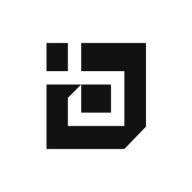

Red Hat Ansible Automation Platform and BackBox compete in automation and network management. Based on data comparisons, BackBox seems to offer superior features in network situations, while Red Hat Ansible might have an edge in pricing and support.
Features: Red Hat Ansible Automation Platform provides orchestrating capabilities across diverse environments, with robust integration and a collaborative ecosystem. It enhances operational efficiencies through automating complex workflows. BackBox specializes in network automation, offering strong backup and restoration features, automated conflict resolution, and superior configuration management that ensure network reliability and efficiency.
Ease of Deployment and Customer Service: Red Hat Ansible Automation Platform requires more customization but provides extensive customer service, especially valuable for technical users. BackBox offers a streamlined deployment process tailored to network management, allowing quicker setup with dedicated network-focused support that benefits users requiring less technical intervention.
Pricing and ROI: Red Hat Ansible Automation Platform involves higher initial costs but delivers substantial ROI for large-scale automation needs, driven by its versatility and expansive integration capabilities. BackBox presents more cost-effective initial pricing and high ROI for network-centric automation due to its specialization, offering swift financial benefits in network management applications.
| Product | Market Share (%) |
|---|---|
| Red Hat Ansible Automation Platform | 17.1% |
| BackBox | 2.6% |
| Other | 80.3% |

| Company Size | Count |
|---|---|
| Small Business | 24 |
| Midsize Enterprise | 8 |
| Large Enterprise | 48 |
BackBox brings powerful automation to help free people by removing complexity from network management. BackBox also creates a central backup of network device configurations with one-click recovery to help ensure high availability resilience.
Red Hat Ansible Automation Platform streamlines IT operations with features like a simplified GUI and extensive module support. Its agentless architecture and YAML ease make it an adaptable choice for managing diverse infrastructures efficiently.
Red Hat Ansible Automation Platform offers a robust automation framework that supports multiple environments and integrates well with various applications. Its agentless Python-based architecture facilitates efficient server management and rapid update deployment. Users benefit from centralized management through Ansible Tower, role-based access control, and dynamic inventory. However, improvement areas include documentation, API integration, network support, and UI scaling. Enhanced community contributions could address module availability and compatibility gaps.
What are the most important features of Red Hat Ansible Automation Platform?In industries like finance, healthcare, and technology, Red Hat Ansible Automation Platform is used for network management, security compliance, and configuration tasks. Organizations utilize its capabilities for cloud and on-premises deployment, infrastructure provisioning, and workflow orchestration. Many integrate it with tools such as Puppet or Terraform to enhance CI/CD processes, benefiting from its agentless design in adapting to cloud environments.
We monitor all Network Automation reviews to prevent fraudulent reviews and keep review quality high. We do not post reviews by company employees or direct competitors. We validate each review for authenticity via cross-reference with LinkedIn, and personal follow-up with the reviewer when necessary.